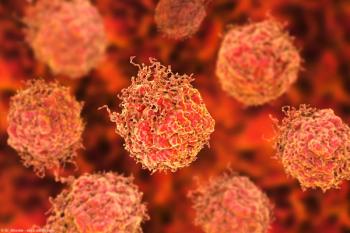
Transplantation: Higher rates of PCa seen in kidney recipients
Other take-home messages on transplantation from AUA 2018 included the finding that kidney paired donations have more than doubled since their inception in 2009 as well as early robotic kidney transplantation studies.
Other take-home messages on transplantation from AUA 2018 included the finding that kidney paired donations have more than doubled since their inception in 2009 as well as early robotic kidney transplantation studies. The take-homes were presented by Yaw A. Nyame, MD, MBA, MHSA, of Cleveland Clinic.
- On PSA screening, higher rates of prostate cancer were seen among kidney transplant patients than the general male population. Separately, men who were diagnosed with prostate cancer that had had transplants were younger and had higher PSA densities. A third study found rates of bladder adenocarcinoma were higher in patients who had had a bladder augmentation and a kidney transplant.
- Among nearly 7,000 donor nephrectomies performed between 1995 and 2015 in New York State, urologists were the highest-volume surgeons and urologists were more likely to perform these procedures with a minimally invasive approach. Urologists had lower rates of readmission and lower length of stay than general surgeons and transplant surgeons.
- Readmission among kidney transplant recipients was directly linked to diabetic status on univariate and multivariate analyses. Implementation of a protocol including a standardized phone call and early postoperative visit decreased readmission rates by 15%.
- Kidney paired donations have more than doubled since their inception in 2009. Among patients who had paired donations, the rate of pre-emptive transplantation is higher, which correlates with a lower rate of graft failure and a lower rate of overall mortality.
- In the Global Kidney Exchange program, surgeons identified four chains of kidneys from the Philippines, Mexico, and the U.S. and were able to complete 31 total transplants. The program may address immunologic and socioeconomic disparities, but is still in its infancy and depends solely on philanthropic donations.
- Normothermic Extracorporeal Membrane Exchange, which has been used predominantly in liver transplant, is a unique way to preserve graft function in deceased kidney donors and was associated with lower rates of delayed graft function when compared to an ultra-rapid organ retrieval protocol.
- The ways in which donors can be identified for transplantation are being redefined. One study showed en bloc transplantation is possible from very small donors (<10 kg or <8 months of age), and a second found that living donation in patients over age 70 years showed intermediate-term success in graft function.
- Early robotic kidney transplantation studies demonstrated that the wound infections and symptomatic lymphoceles were lower and pain control was better with the robotic approach, but there was no advantage in length of stay and no difference in overall survival and allograft function.
- In a study of renal auto-transplantation, having multiple arteries, having a urinary stent or nephrostomy tube, and/or a positive preoperative urinary tract infection was associated with a high risk of graft failure, a finding that may improve selection of patients for auto-transplantation and/or manage them with antimicrobial therapy prior to transplantation.
Newsletter
Stay current with the latest urology news and practice-changing insights — sign up now for the essential updates every urologist needs.


















